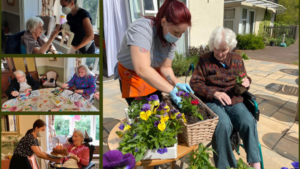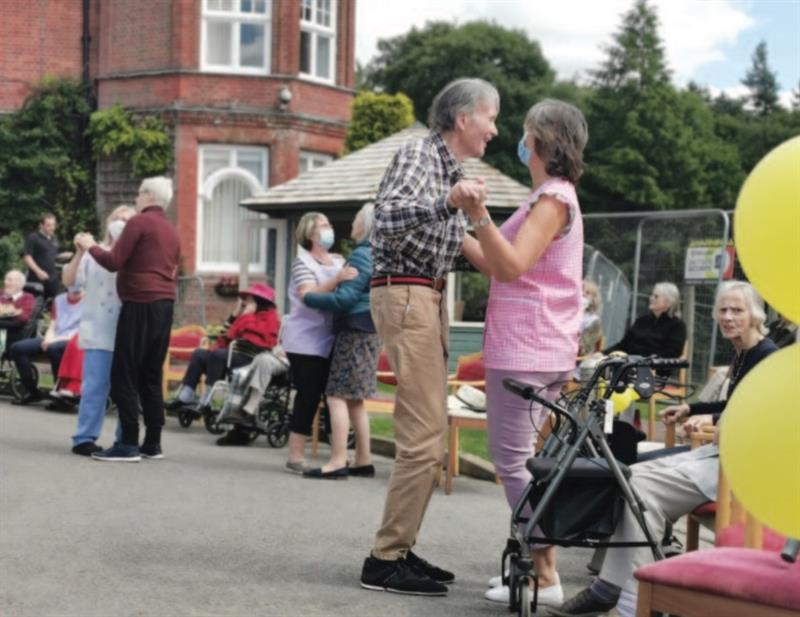An exclusive post written by our MD, Charlie
We’ve seen the footage of people in PPE, staff at full stretch, the care industry at breaking point, but there’s also been a gentler side to life in care homes during lockdown. Of course, suspected or confirmed cases of Covid-19 have called for an all-hands-on-deck approach with surgical levels of infection control, but it’s certainly not the whole story.
For us, lockdown has meant no appointments to take people to, no events to organise and attend, and it has made a big difference to the feel of our homes. As an example, one of the responsibilities of Bess, our team leader at Huntington House, would normally be to make sure people were ready for the hairdresser and any other appointments. Now, she is the hairdresser.
Bess actually happens to be a qualified hairdresser – she’s one of those annoying people who is brilliant at everything! But the point is that our staff have been able to focus on “being” rather than “doing”. The workload hasn’t necessarily reduced, but it has shifted.
Time spent on the things that matter
Instead of trying to keep everyone busy all of the time for fear they might be bored or lonely – two of the biggest focuses of our industry in recent years – care homes across the country are modelling the new trend for slow living.
The slower pace of life is actually more akin to how the generation we are caring for used to live, and when our nation as a whole was arguably at its happiest. In consequence, residents and staff alike are spending time on things that are most important to them – sitting in the garden, listening to music and dancing, staying in touch with family and friends. The latter, of course, has provided some logistical challenges, but not without plenty of success.

Grandchildren, instead of sitting uncomfortably in the corner of a care home lounge, are putting on impromptu plays via FaceTime, or giving virtual tours of their bedroom or the walk they’ve been doing every day. These are moments and places that our residents may never have seen otherwise.
Younger people’s familiarity with technology has enabled residents to have genuine engagement with their families that wouldn’t necessarily happen naturally in a care home. The effectiveness of these virtual visits has been one of lockdown’s biggest surprises. FaceTime will never replace a real hug, but it has been an amazing addition to the support we’re able to provide, not just for residents but for whole families.
There have been so many lessons learned from lockdown, but perhaps none so poignant as the importance of family. Leading dementia charities recently called for relatives of care home residents to be given key worker status, and I couldn’t agree more.
Our ethos has always encouraged family involvement and many relatives have been part of day-to-day life on the estate for years, from helping to plant out the gardens to running poetry reading groups. But there is always more we can do. Once it’s safe to do so, it’ll be time to up the ante!
‘Don’t leave me behind’
To this end, we have teamed up with the University of Surrey on a project called “Don’t leave me behind”, which will look at strengthening social connections between all the generations of a family through shared real-time, interactive experiences.
As an example, if an elderly relative is unable to attend a wedding, a member of the family will be able to wear a lapel camera with an in-built microphone and speaker that will live-stream to a tablet or TV and allow two-way conversations, enabling relatives to be “present” in more than just spirit.
The project is currently in a bid for funding, but, in the meantime, we are looking at ways in which families can record personalised video podcasts that we can play to their relatives.
They might record their favourite place to walk the dog using a GoPro camera, or even a conversation around the dinner table – normal, everyday activities that might seem mundane to most of us but have the potential to make their relatives feel involved in family life again.
If you’d be interested in seeing life on our estate in more depth, please don’t hesitate to contact us to arrange a virtual tour.

